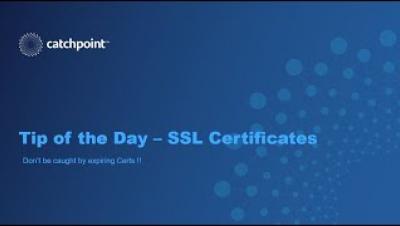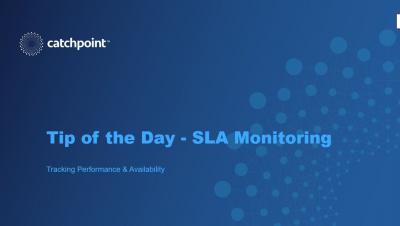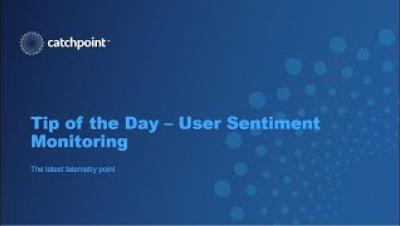Operations | Monitoring | ITSM | DevOps | Cloud
Catchpoint
Tip of the Day - Synthetic Monitoring the Catchpoint way
Tip of the Day - SSL Certificates
Tip of the Day - Site Couldn't be Reached
Tip of the Day - SLA Monitoring
Tip of the Day - Monitoring API's
Tip of the Day - Websee / User Sentiment
Benchmarking End User Experience with Web Vitals
Most business verticals are now digitized. Consumers prefer online shopping, rather than going to a store. Within a few clicks, you can purchase any item of your choice and get it delivered to your doorstep. One of the key reasons for online businesses gaining popularity is their time-saving nature. So, the main goal of any website should be to deliver the best end-user experience.
Monitoring APIs for Better Performance
In this week’s Tip Tuesday, we are focusing on API monitoring. APIs are a set of rules or standards, which extend the functionality of an application, allowing different applications and/or programs to interact. These little helpers are built with flexibility and ease of integration in mind. APIs simplify programming, allowing developers to build complex applications without having to worry about usability.
Building an Effective Alert Strategy
Alerts are an essential part of performance monitoring. Alerts and notifications need to be sent out as soon as an issue is identified, allowing you to know about any problems before your customers do. In this week’s Tip Tuesday, we look at building an effective alert strategy and how to utilize Catchpoint Alerts so that you can quickly and effectively leverage the information provided to take carefully targeted action and improve your MTTR. Building an effective alert strategy is important.









